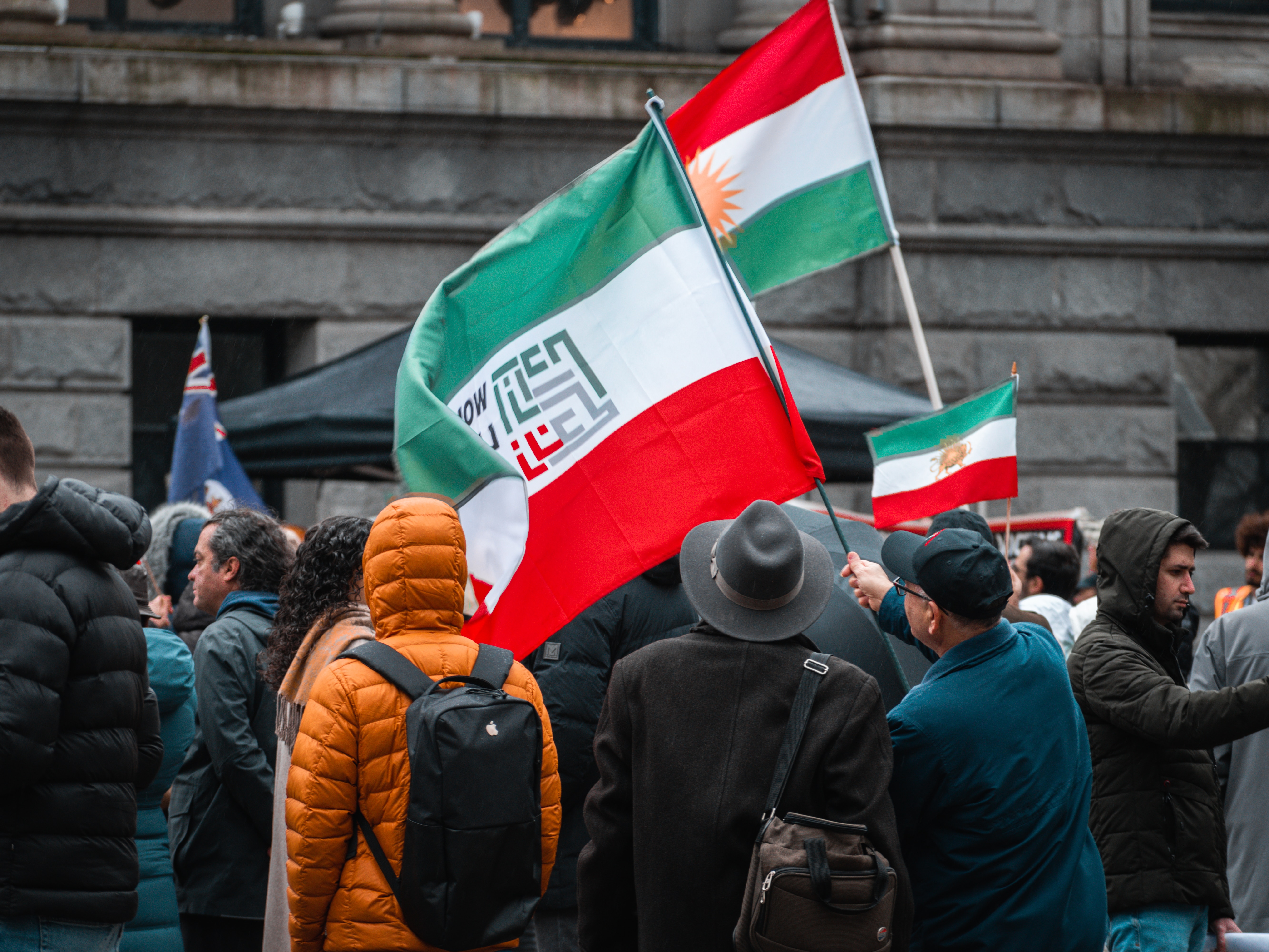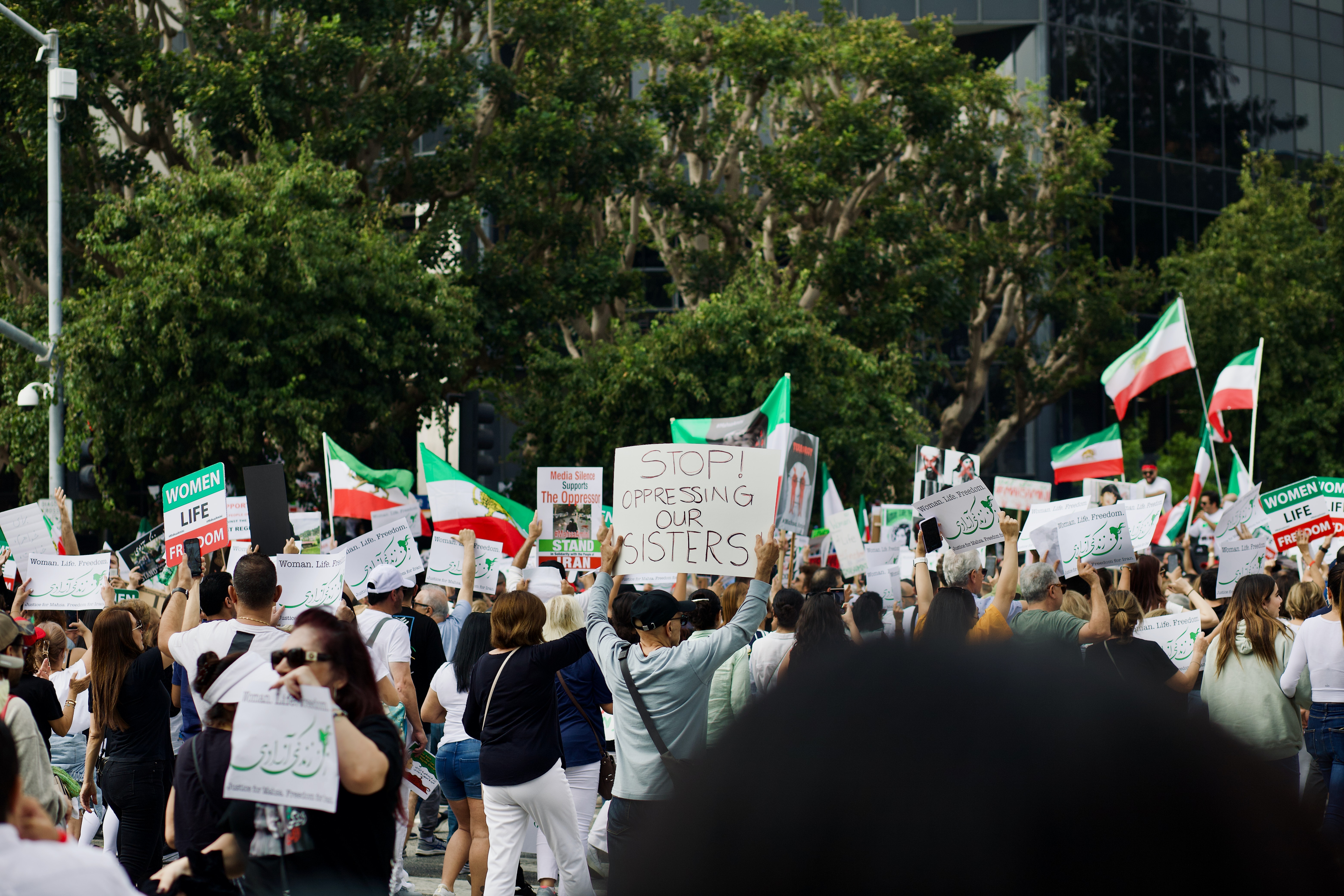Mahsa Amini, a 22-year-old from the Kurdistan province of Iran, traveled to Tehran in September 2022 to visit her brother. As is customary in Kurdistan, she wore her hijab with some hair showing in the front. On Sept. 13th, Iran’s morality police arrested Amini while she was walking with her brother, promising him that she would be lectured on proper hijab-wearing and released in an hour. She was loaded into the police van with several other detainees. Those detainees allege that the police tortured Amini in the back of the car, swearing and beating her until she fell unconscious. Iran’s government has ensured that details remain hazy, but it is believed that the morality police retained Amini in jail, comatose for several hours before being transported to Kasra Hospital, where she died on Sept. 16th, 2022.
In response to Amini’s death, the largest protests in Iran since the Iranian Revolution in 1979 raged in every major Iranian city for weeks, inciting violent retribution from police. The world watched as police locked college students in an enclosed building, then sprayed them with gunfire and poison gas. According to Iran Human Rights Watch, the morality police have killed 476 protestors , as of Dec. 27th. In September, the United Nations, the organization tasked with protecting victims of government brutality, considered launching an independent investigation into Amini’s death. But since then, the U.N. has not taken any real action. The victims of the Islamic Republic have received no aid from the U.N. or any foreign powers.
Although U.N. intervention threatens Iran’s territorial sovereignty, legal precedent and the U.N.’s founding obligations dictate that it protect those being stripped of their human rights.
The role of the U.N.
Iran represents a particularly difficult case because most non-military penalties—including economic sanctions, disruption of communication infrastructure, and severing of diplomatic relations—have already been imposed by the U.N., as well as individual nations like the U.S. Ahmed K. Rashid, an International Relations analyst and researcher that specializes in development, argued that “only cases such as genocide, ethnic cleansing or the systematic massacre of a religious or national community can justify an international response,” and that all “humanitarian intervention involves the use of force.”
The U.N. charter does guarantee Iran a right to governmental autonomy—unless its government commits “ any threat to the peace, breach of the peace, or act of aggression.” The U.N. has the right to intervene in a state’s affairs in order to “maintain or restore international peace or security.”
Without extending aid to Iranian civilians, the U.N. becomes useless. Opinions aside, the U.N. reserves certain legal rights and responsibilities that supersede territorial sovereignty, and inaction contradicts the U.N.’s self-stated purpose. The doctrine of The Responsibility to Protect (R2P) states that the U.N.’s primary goal is to protect civilians from genocide or crimes against humanity in war. The Guardian’s foreign affairs editor Peter Baumont called R2P the “new norm,” informing the U.N.’s decisions in multiple international conflicts. According to Baumont, R2P was applied to justify intervention in conflicts in Libya, Mali, and the Ivory Coast—all civil wars, with the main issue being government violation of its citizens. If the crackdown on the Mahsa Amini protests is seen as a civil war between Iran and its citizens, intervention is entirely in line with the U.N.’s ideology.
Legal precedent
Iran has repeatedly and flagrantly violated several stipulations of its constitution : 1) “public gatherings and marches may be freely held, provided arms are not carried and that they are not detrimental to the fundamental principles of Islam”; 2) “the passing and execution of a sentence must be only by a competent court”; 3) “all affronts to the dignity and repute of persons arrested, detained, imprisoned, or banished in accordance with the law, whatever form they may take, are forbidden and liable to punishment.” Police killed Mahsa Amini before she was charged or sentenced with any crime, violating both the second and third tenets. They also killed hundreds of unarmed protestors, including dozens of minors, which violates the first criterion.
The government argues that the crackdown is justified because the protests violate “fundamental principles of Islam,” but that claim is predicated on only one interpretation of Islam. Many scholars and Muslims hold different perspectives. For example, in a 2017 Ted Talk , award-winning novelist Samina Ali argued that the Quran never mandates the wearing of the hijab. Under the Universal Declaration of Rights, to which Iran is a signatory, the government has no right to impose a specific interpretation of religion upon its citizens. Iran’s failure to meet both its self-imposed duties to its people and the obligations of its treaties necessitates intervention by the U.N.
Moreover, the European Court of Human Rights has already established the precedent that Iran’s torture and unfair arrest of its citizens for their political or religious opinions compels European nations to violate Iranian autonomy to protect the individual liberties of Iran’s people. In 2008, a married couple applied for asylum in Sweden after fleeing Iran in fear of torture and arrest for their involvement in a Kurdish political party. They claimed that several party members had been arrested and that the man’s father had been interrogated about the couple’s whereabouts multiple times. Their asylum application was denied because Swedish authorities did not believe that their story was credible or that their involvement in the party posed any real danger. The couple appealed the rejection to the European Court of Human Rights, which ruled in S.F. et al. v. Sweden that, since the couple was in danger of being tortured if sent back to Iran, Sweden must accept them as refugees. As an autonomous nation with powers over its citizens, Iran should be entitled to receive rejected asylum applicants, but its history of human rights violations renders this privilege of sovereignty void.
Religion
In 1979, a people’s coup replaced the dictatorial Shah of Iran, Mohamed Rex’s Pahlavi, replacing his corrupt empire with the Islamic Republic. Before the coup, many Iranian women wore hijabs with some hair showing or wore no hijabs at all. To reverse the Shah’s westernization of the country, then-Supreme Ruler of the Islamic Republic Ayatollah Khomeini mandated in 1983 that all girls wear the hijab in public from the age of 9, a policy that has remained controversial ever since: a survey by a Dutch research institute found that about 72% of Iranians now oppose compulsory hijab-wearing.
Islamic law is the basis of Iran’s government, and given both the current regime’s power and Islam’s importance to Iranian culture, intervention could not end Sharia law. But the current system must change: the government does not guarantee citizens the U.N.-mandated right to freedom of religion, since the Iranian constitution only recognizes Christians and Jews as religious minorities—the practice of all non-Abrahamic religions, or no religion, is banned and punishable by law. The Islamic Republic claims that 99.5% of Iranians are Muslim, but the aforementioned survey found that only 40% of Iranians identify as such.
It is a grave error to see the Mahsa Amini protests as merely a critique of the hijab mandate. In fact, the response to her death is better understood as a continuation of a revolution against the Islamic Republic that has been repressed for decades. Clerics and other deeply religious people have even joined Iranian women in protesting the Islamic Republic after decades of inexcusable human rights abuses. The rights most discussed in the current protests are the freedom of religion, speech, and assembly, as well as the right to be fairly treated in the justice system. Based on Iranians’ “secular shift” and deep distrust of the Islamic Republic, intervention by U.N. peacekeeping forces could successfully loosen the strict enforcement of Islamic law.
 Photo by Albert Stoynov on Unsplash
Photo by Albert Stoynov on Unsplash
Concessive
The West is hesitant to intervene because of a troubled history of Middle Eastern-Western relations. As of May 2023, protests have continued, but coverage by Western media has all but disappeared. The international community, especially the U.S. , has only responded with sanctions—a controversial and typically unsuccessful measure that harms the economic livelihoods of Iranian civilians and, therefore, their ability to protest.
Diplomacy has never yielded much success in Iran, either: the U.S. has not had formal relations with Iran since the hostage crisis in 1979, and the idea of military intervention is sometimes labeled neocolonialist. European powers never occupied Iran, but in the late 19th and early 20th century, the U.K. controlled Iran’s tobacco and oil industries. In 1953, they worked with the U.S. to overthrow the Iranian government when it threatened British economic influence. Some argue that intervention imposes Anglo-American culture on Iran, which has struggled so bitterly against westernization that the U.S. cannot safely maintain an embassy there. A perceived threat to Iran’s autonomy could result in retaliatory violence against its own citizens. Finally, before the U.N. can intervene, it must be proven that foreign powers can successfully remedy the situation while minimizing unintended harm and ensuring that it does not mimic colonial powers.
The U.N.’s predecessor, the League of Nations, adopted the Mandate System after World War I, when Germany and other imperial powers lost much of their colonized overseas territory. To allegedly help these territories thrive, introducing the concepts of human rights and helping develop their technology, the League of Nations adopted the Mandate System. “Mother countries”—or, better put, imperial powers—would take control of these territories for an arbitrarily decided number of decades in order to help them develop. In reality, imperial powers used the justification of necessary intervention in the interest of human rights to exploit their territories for labor and goods, harming their economies and peoples further. The U.N. must tread very lightly to break this history, and to do so, it must understand which rights Iranian women are fighting for and the best way to secure these rights without threatening Iranian culture.
What to do?
The U.N. must consult Iranians before making any attempt at intervention. A misunderstanding of Iranian cultural wants and needs could be deadly for Iranians and peacekeepers. Western intervention repeatedly has failed, especially in the Middle East, to understand the nuances of rights-based conflicts due to how concepts of human rights interact with culture. I propose that the U.N. create a special advisory committee on Iranian human rights abuses and set up a communication network in Iran through which they can communicate with protestors. Of course, no movement is entirely unified, and finding out what Iranians want is impossible since each individual has different political and cultural desires. But the U.N. cannot take action in Iran without prioritizing Iranians. Anything else would defeat the point of intervention.
Said Seti Shalchi, a Houstonian substitute teacher who fled Iran as a teenager after the government confiscated all of her family’s possessions and revoked their citizenship, stated “the government has declared war on their own people.” The regime has been allowed to violate its treaties, its constitution, and its people’s rights for 43 years. If the U.N. continues to stand by as Iran wages this war, it proves to be nothing but a name.
Cover: Photo by Craig Melville on Unsplash



